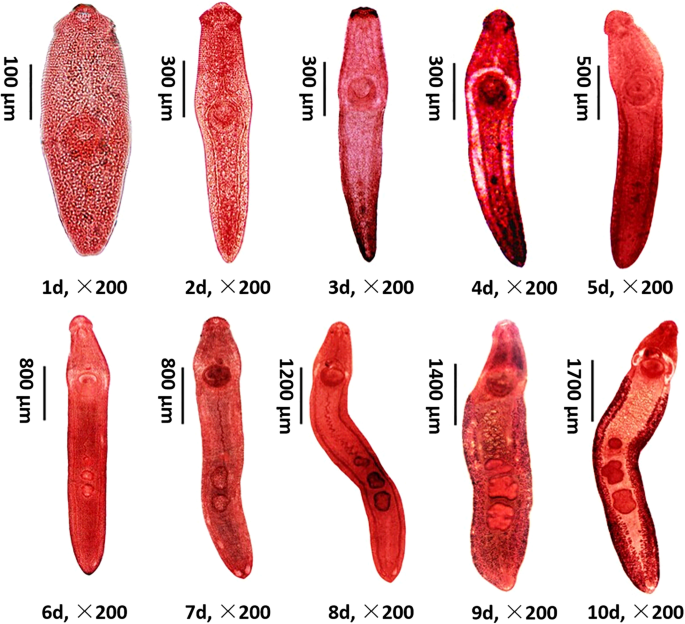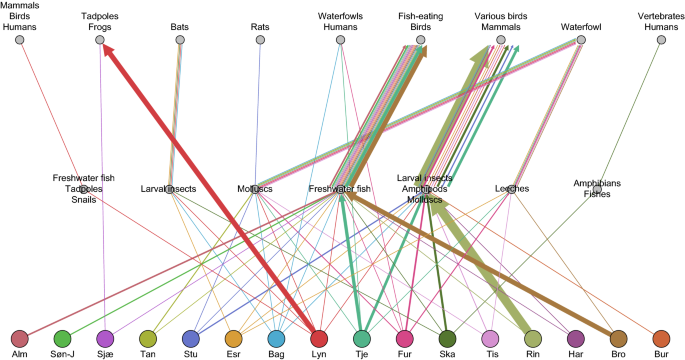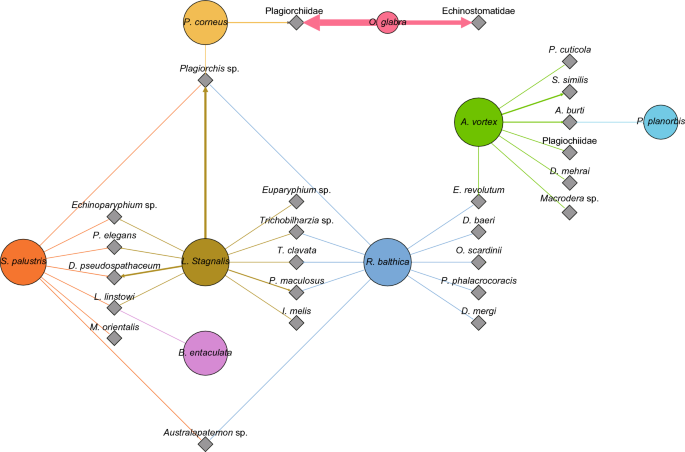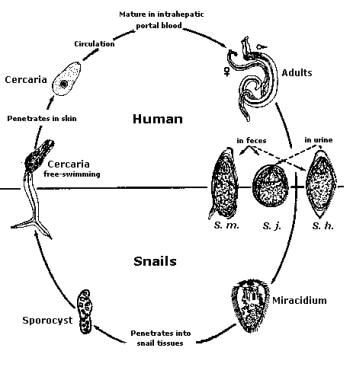A relatively high zoonotic trematode prevalence in Orientogalba ollula and the developmental characteristics of isolated trematodes by experimental infection in the animal model, Infectious Diseases of Poverty
4.5 (192) In stock

Background Food-borne parasitic diseases decrease food safety and threaten public health. The snail species is an intermediate host for numerous human parasitic trematodes. Orientogalba ollula has been reported as intermediate hosts of many zoonotic trematodes. Here, we investigated the prevalence of zoonotic trematodes within O. ollula in Guangxi, China, and assessed their zoonotic potential. Methods Snails were collected from 54 sites in 9 cities throughout Guangxi. The snail and trematode larvae species were determined by combining morphological characteristics and molecular markers. The trematodes prevalence and constituent ratio were calculated and compared among different habitat environments. Phylogenetic trees of the trematode species were constructed using the neighbor-joining method with nuclear internal transcribed spacer 2 (ITS2) sequences. The developmental cycles of the isolated trematodes were examined by experimental infection in ducks. The developmental characteristics of Echinostoma revolutum was recorded by dissecting infected ducklings from 1-day post infection (dpi) to 10 dpi. Results The overall prevalence of trematode larvae was 22.1% (1818/8238) in O. ollula from 11 sample sites. Morphological together with molecular identification, showed that E. revolutum, Australapatemon sp., Hypoderaeum conoideum, Pharyngostomum cordatum, and Echinostoma sp. parasitized O. ollula, with the highest infection rate of E. revolutum (13.0%). However, no Fasciola larvae were detected. The trematodes prevalence and constituent ratio varied in two sub-biotypes (P < 0.01). A neighbor-joining tree analysis of ITS2 sequences resulted in distinct monophyletic clades supported by sequences from isolated larvae with high bootstrap values. Ducklings exposed to O. ollula infected with Echinostoma sp., E. revolutum, and H. conoideum larvae were successfully infected. The animal model for Echinostoma revolutum was successfully established. E. revolutum matured from larvae to adult at 10 dpi in the intestine of the duck, and the developmental characteristics of E. revolutum were characterized by the maturation of the reproductive and digestive organs at 6–8 dpi. Conclusions This study revealed a high prevalence of zoonotic trematodes in O. ollula from Guangxi, China. Existing trematodes infection in animals and human clinical cases, coupled with the wide geographical distribution of O. ollula, necessitate further evaluations of the potential risk of spillover of zoonotic infection from animal to human and vice versa. Graphical Abstract

Morphological and molecular evidence support the intertidal

Age-period-cohort analysis of pulmonary tuberculosis reported

Trematode diversity reflecting the community structure of Danish

Trematode diversity reflecting the community structure of Danish

Intensity of H. taichui metacercariae detected in freshwater

Trematode Infection: Background, Pathophysiology, Epidemiology

Zoonotic Trematode Infections; Their Biology, Intermediate Hosts

PDF) A relatively high zoonotic trematode prevalence in

Zoonotic Trematode Infections; Their Biology, Intermediate Hosts
Liver Fluke Life Cycle: Introduction, Life Cycle, FAQs
A fluke is a type of parasitic flatworm.
Liver Fluke Worm Model, 10x7 - Numbered Structures - Hand Painted — Eisco Labs
Fluke Worm gcam poplus 008, Fluke worm from stool. Actual s…
 Westin BuzzBite DR Crankbait 6.5cm 14g Floating Chart. Blue Craw
Westin BuzzBite DR Crankbait 6.5cm 14g Floating Chart. Blue Craw Basic Hook SVG Cut & Clipart File, Hook Vector Instant Download
Basic Hook SVG Cut & Clipart File, Hook Vector Instant Download 10-200pcs Fishing 4x strong offset circle hooks Size 1/0 Black
10-200pcs Fishing 4x strong offset circle hooks Size 1/0 Black Bullet Weights® 2 Oz. Egg Sinker 8 sinkers
Bullet Weights® 2 Oz. Egg Sinker 8 sinkers Schwer ANSI A9 Cut Resistant Gloves, Food Grade Reliable Cutting Gloves, Mandoline Gloves for Kitchen Meat Cutting, Oyster Shucking, Fish Fillet
Schwer ANSI A9 Cut Resistant Gloves, Food Grade Reliable Cutting Gloves, Mandoline Gloves for Kitchen Meat Cutting, Oyster Shucking, Fish Fillet Yin Yang Koi Fish Carp Fish Pendant Necklace Matching Lucky Couple
Yin Yang Koi Fish Carp Fish Pendant Necklace Matching Lucky Couple